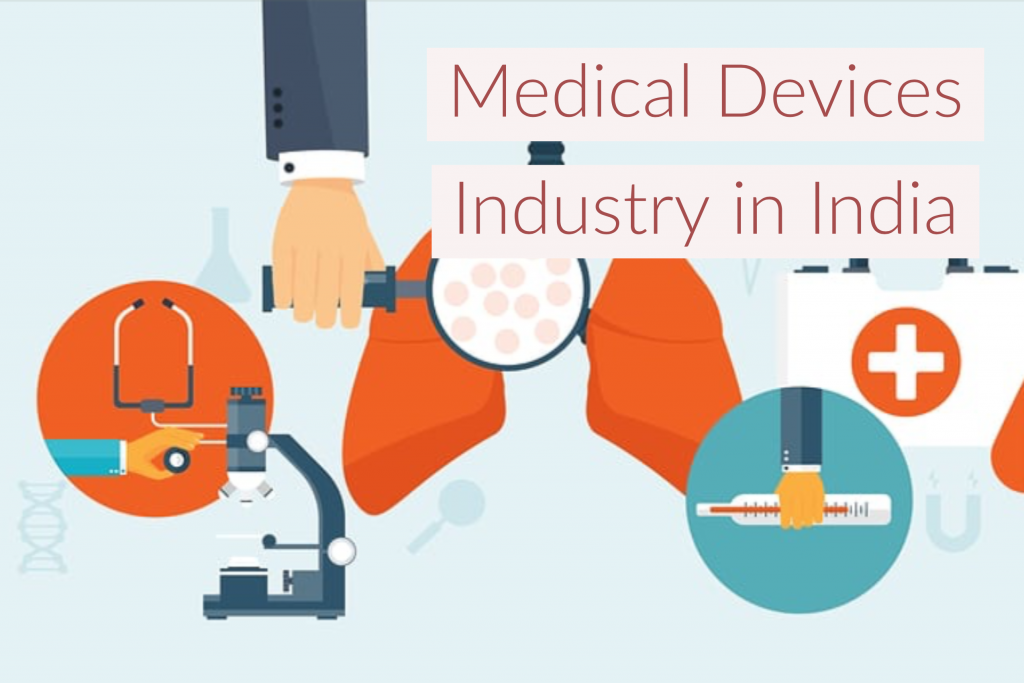

Overview
The medical devices industry in India consists of large multinationals, with extensive service networks, as well as small and medium enterprises (SMEs). The market is presently valued at USD 5.2 Billion and is growing at 15.8% CAGR. As per the Department of Pharmaceuticals, the estimated retail market for medical devices is between $ 9.3 bn – $ 10.8 bn. Currently, India is counted among the top 20 global medical devices market and is the 4th largest medical devices market in Asia after Japan, China and South Korea and is poised to grow to USD 50 billion by 2025 as per some industry estimates.
The medical device market is dominated by imported products, which comprise of around 80% of total sales. The domestic companies are largely involved in manufacturing low-end products for local and as well as international consumption. Lately, many multinational companies have established local presence by acquiring established domestic companies or starting a new business.
Diagnostic imaging, consumables, and other medical devices form 86% of total export trade for Indian medical devices industry in FY 2016-17. The U.S. is the largest exporter, accounting for 15% of the export trade. Singapore, Germany, and China are the other leading exporters, accounting for 7%, 6.7%, and 6.4% respectively. The European Union constitutes 27.1% of the total export trade. Furthermore, the U.S., Germany, China, Japan, and Singapore constitute the five largest exporters of high technology medical equipment to India.
Industry Scenario

The medical device industry market is very dynamic and the key drivers impacting this sector are healthcare expenditure, technological development, aging population, and chronic diseases. Further emerging trends that impact the medical device industry include the changing medical technology landscape, software as a differentiator in medical devices, as well as design and manufacturing of patient portable or smaller devices. In India, medical devices is now considered to play a key role in the delivery of quality health care to the masses. The launch of MDR 2017 was a significant milestone in creating a robust platform. The awareness around the need to have a robust medical devices ecosystem in the country is gaining traction resulting in higher growth rates for India as compared to the global industry.

The year 2018 has been noteworthy for this space with the emergence of the new medical device rules which came into force from January 2018. This has finally given the medical devices and in-vitro diagnostic devices (IVD) industry a distinctive regulatory identity. By delinking devices from drugs, the multitudes of devices used in the country today are governed to ensure patient safety, quality and performance parameters of devices sold within the country. Given that 80 percent of the devices are imported, the legislation has an important role to play in creating a level playing field for domestic and foreign manufacturers. The legislation is hopeful in achieving the main goals of the National Health Policy that calls for addressing the changing priorities in Indian healthcare by mainly bridging the accessibility and affordability gap. On another hand, the industry in India is going through tough times because of anomalies in import-export policy as per the report by ASSOCHAM. This is due to the import duties for raw materials being higher than finished goods, making it difficult to compete with manufacturers from some countries on price who also benefit with incentives of setting up a manufacturing facility in this space.
The manufacturing space in the medical devices sector is at a nascent stage and with the government’s encouragement; it will evolve as a sunshine sector. The “Make in India” charter has motivated medical device manufacturers in India, with promise of the government support in the form of land allocation and subsidies to encourage growth of the domestic medical device industry. However, the slow infrastructure development of these parks is creating obstacles for the domestic industry and thereby resulting in an indirect implication of availability of devices in the country. Hence apart from the cost, the government’s move to separate manufacturing of medical devices and drugs from the regulatory perspective could usher in better transparency and a level playing field for medical devices makers. This will go a long way in building robust standards ecosystem for the industry, boost domestic production as well as boost exports, usher in greater foreign investment in the sector and bring in more investments into infrastructure and processes.
Medical devices are segregated into six major segments, of which equipment and instruments (surgical and non-surgical) form the largest portion (53%) of the pie in India.
There are 750–800 domestic medical devices manufacturers in India, with an average investment of $ 2.3–2.7 mn and an average turnover of $ 6.2–6.9 mn. Around 65% of the manufacturers are mostly domestic players operating in the consumables segment and catering to local consumption with limited exports.

India’s medical devices industry is poised for significant growth in the next five years:
- The market size is expected to reach $ 50 bn by 2025
- Orthopaedic prosthetics and patient aids segments to be the two fastest-growing verticals by 2020 and are projected to grow at a CAGR of 9.6% and 8.8%, respectively
- Diagnostic imaging, dental products, and consumables are expected to grow at a CAGR of 7.1%, 7.4% & 7.1%, respectively during 2015-20
